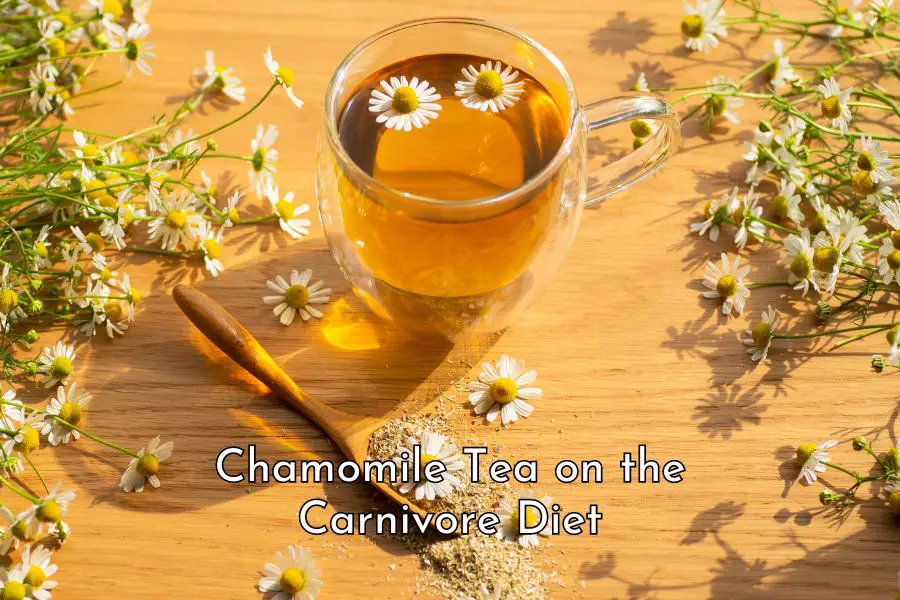Organ meat is the most nutrient-dense food that your children can eat and an excellent choice to meet their growing nutritional needs. However, in the West, organ meat is not a common part of most people’s diets, and introducing it to children can be quite challenging for parents. In this article, we’ll provide 10 tips to help you incorporate more organ meat into their meals. [1]
1. Lead by Example
Children often mimic the eating habits of adults, so if you demonstrate a willingness to enjoy organ meats, they may be more open to trying them.
When children see their parents or caregivers enjoying organ meat, they will likely develop a positive attitude toward it instead of thinking that it’s something yucky. Consistent exposure to organ meat in family meals can make it a more familiar and accepted part of their diet. Over time, they may become more comfortable with the idea of trying it out.
2. Start with Organs with Familiar Taste
There is a wide variety of organ meats to choose from, such as liver, kidney, heart, tongue, tripe, brain, lung, pancreas, tendon, bone marrow, testicle, and oxtail. However, when introducing organ meat to your children for the first time, it’s a good idea to begin with options that have a milder flavor and don’t have a strong offal taste, such as tongue, heart, bone marrow, brain, oxtail, and tendon.
Tongue and heart, in particular, closely resemble dense muscle meat in taste and texture, making them excellent choices for newbies. Similarly, oxtail consists mainly of muscle meat with a bit of bone and tendon, while brain and bone marrow offer a creamy and buttery texture that may be more appealing to those new to organ meats. Beef tripe also has a very mild taste and can be a great addition to soups and stews.
3. Create Homemade Pâté
Of all organ meats, liver is the most nutrient dense organ that you can eat. In fact, when it comes to natural foods, whether animal or plant-based, gram for gram, beef liver takes the crown as the most nutrient-dense option. If you want to boost your children’s nutrient intake, liver is the one organ meat you should definitely add to your children’s diet.
Liver is a rich source of protein and many essential vitamins and minerals including vitamin A, vitamin B12, iron, and folate, vitamin B6, riboflavin, niacin, copper, zinc, and selenium as well as many beneficial bioactive compounds. [2]
Just a 30-gram (approximately 1 ounce) serving of beef liver packs an impressive punch: [3]
- Vitamin B12: 17.8 mcg or 742% of RDA
- Vitamin A: 1490 mcg or 166% of RDA
- Copper: 2.9 mg or 147% of RDA
- Riboflavin: 0.8 mg or 49% of RDA
- Vitamin B6: 0.3 mg or 25% of RDA
- Folate: 87 mcg or 22% of RDA
- Niacin: 4 mg or 20% of RDA
- Iron: 1.5 mg or 19% of RDA
- Choline: 100 mg or 19% of RDA
- Selenium: 11.9 mg or 18% of RDA
- Phosphorus: 116.1 mg or 12% of RDA
- Zinc: 1.2 mg or 8% of RDA
- Manganese: 0.1 mg or 5% of RDA
- Thiamine: 0.1 mg or 4% of RDA
- Vitamin D: 0.4 mcg or 3% of RDA
- Magnesium: 5.4 mg or 2% of RDA
- Vitamin K: 0.9 mcg or 1% of RDA
- Vitamin E: 0.1 mg or 1% of RDA.
However, liver does have strong offal taste that even some adults can’t bring themselves to eat freshly cooked liver.
Fortunately, pâté, a popular French dish commonly made from pork liver and pork fat is a super delicious way to incorporate this nutrient powerhouse into your children’s diet.
Although pâté is commonly made from pork liver, fatty pork cuts, and seasonings, you can make your own homemade pâté from beef, lamb, chicken or pork liver and a variety of meat such as pork, poultry, venison, ham, and even fish.
Pâté goes well with pork crackles, smoked salmon, smoked cod, cheese and crackers, or crispy bacon.
4. Mix with Ground Meat
Organ meats such as liver, kidney, heart, brain, and bone marrow, can be pureed and mixed with ground meat in recipes like meatloaf, meatballs, or burgers. By blending them in, the flavors can be less pronounced and easier for children to accept.
As organ meat is so nutrient-dense, you don’t need to add a lot of organ meat to ground meat and still increase its nutritional value substantially. For example, blending 5% beef liver and 5% beef kidney with 90% ground beef in your meatloaf, meatballs, or burger patties will hardly affect the overall taste, making it imperceptible to children. You certainly can gradually increase the amount of organ meat over time as your children become more accustomed to it.
5. Sneak Them into Soups and Stews
Dicing organ meats into small pieces and adding them to soups, stews, or casseroles is another way to add more of those super-foods to your children’s diet. The flavors can meld with other ingredients, making them less noticeable. Below are a few ideas for you to try out:
- Adding beef tendon pieces to a stewed meat dish to increase its collagen content
- Adding offal sausage slices to soups or stews
- Dicing organ meats (e.g. heart, brain, and marrow) into small pieces and sautéing them separately with seasonings before adding them to soups or stews
- Adding meatballs made with ground meat and organ meat to soups or stews
- Adding a small amount of pureed liver or kidney to soups or stews as a thickening agent
- Using bone broth instead of water in your soups and stews.
6. Make Kid-Friendly Dishes
Incorporating organ meats into child-friendly dishes such as meatballs, mini meat pies, nuggets, savory muffins, and finger foods can make them more visually appealing and easier for children to enjoy. Here are some examples:
- Mini meatloaf muffins: Create these using a mixture of ground beef, pureed liver, eggs, grated cheese and bacon bits for a tasty twist
- Chicken nuggets: Prepare nuggets using ground chicken, ground beef, Parmesan cheese, eggs, and a small amount of liver puree for added nutrition
- Scrambled eggs with lamb brains: Introduce lamb brains into scrambled eggs for a unique and nutritious breakfast option
- Liver pate egg sandwiches: You can make delicious sandwiches with fried eggs and liver pate paste
- Organ meat pasta sauce: Enhance pasta dishes by incorporating a small amount of pureed organ meat into the sauce
- Spaghetti bolognese: Combine minced liver, heart, and kidney with ground beef for a nutrient-rich twist on the classic spaghetti bolognese recipe.
7. Use Seasoning, Gravy or Sauces
Enhancing the flavor of dishes with organ meats for children can be achieved by generously seasoning them with a variety of herbs, spices, and aromatic vegetables. Additionally, incorporating rich and flavorful gravies or sauces can effectively disguise the unique taste of organ meats, making them more appealing to children.
8. Use Freeze Dried Organ Meats
Freeze dried organ meat capsules is a convenient way to add more organ meats to your children’s diet. These organ meat capsules don’t have offal taste so you can crack open the capsules and add the powder to various recipes such as smoothies, home-made ice-cream, soups, stews, meatballs, and burger patties.
If your children are willing to take them straight, they can also be a hassle-free way to boost their nutrient intake.
Although they are not cheap, these dried capsules have a very long shelf life and is very convenient to use.
If you’re considering purchasing these organ meat supplements, be sure to visit our discount page to take advantage of cost-saving opportunities. We are not a financial affiliate of those organ supplement suppliers and do not receive any commission from your purchases. However, we’ve successfully secured a 15% discount exclusively for our readers, so you can enjoy both the nutritional benefits and savings.
9. Introduce Slowly
Even if your children don’t immediately embrace organ meat, continue to offer it regularly. Over time, their palates may adapt, and they may develop a liking for it.
It’s important to stay patient and flexible. You can start with a small amount of organ meats and then gradually increase over time as your children become more accustomed to the flavors and textures. Keep in mind that acquiring a taste for organ meat can be a gradual process, and it’s best not to pressure them. Make it an option rather than a requirement, allowing them the freedom to explore and appreciate these nutritious foods at their own pace.
10. Educate and Involve Your Children
It is important to explain the nutritional benefits of organ meats to your children and involve them in the cooking process. Let them help choose recipes, pick out organ meats, and assist in the kitchen. When kids take an active role in preparing their meals, they may be more willing to try new foods.
Remember that it may take time for your children to develop a taste for organ meats, so be patient and persistent. It’s essential to prioritize their health while respecting their preferences and dietary choices.
Other posts you might be interested in:
What Is the Best Meat to Eat on the Carnivore Diet?
Best Sources of Carbohydrates On a Meat-Based Diet
Is Soy Sauce Okay on a Carnivore Diet?
10 Easy Carnivore Breakfast Ideas
Can You Eat Yogurt on the Carnivore Diet?
Tips On Raising Children On a Carnivore or Animal-Based Diet
Carnivore vs Low-Carbs vs Moderate-Carbs vs High-Carbs
Disclaimer: The information in this post is for reference purposes only and is not intended to constitute or replace professional medical advice. Please consult a qualified medical professional before making any changes to your diet or lifestyle. Please check out our disclaimer for more detail.





